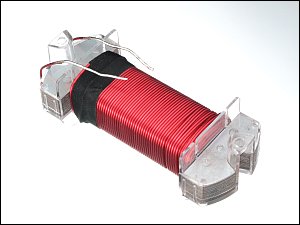 Using an inductor (A.K.A. a coil or choke) in series with a speaker will block higher frequencies while having little effect on the lower (bass) frequencies. Ideally, the inductor should have very low D.C. resistance. This will ensure that there is little power loss in the coil and the power is efficiently transferred to the speaker. If two inductors have the same value (usually stated in millihenries, for those used with speakers) but one is wound with larger wire, the larger wire (all else being equal) will allow more power to be delivered to the speaker. To increase the value with shorter lengths of wire, you can wrap the wire around a core made of magnetic material like iron or ferrite.
Using an inductor (A.K.A. a coil or choke) in series with a speaker will block higher frequencies while having little effect on the lower (bass) frequencies. Ideally, the inductor should have very low D.C. resistance. This will ensure that there is little power loss in the coil and the power is efficiently transferred to the speaker. If two inductors have the same value (usually stated in millihenries, for those used with speakers) but one is wound with larger wire, the larger wire (all else being equal) will allow more power to be delivered to the speaker. To increase the value with shorter lengths of wire, you can wrap the wire around a core made of magnetic material like iron or ferrite.The following inductors are all approximately the same value. The air core inductor has slightly lower inductance (6.0mH vs 6.8mH) but the laminated iron core inductor and the ferrite core inductor have the same value. When building crossovers, many people believe that the air core inductor is the absolute best because the core cannot interfere with the sound and an air core inductor cannot saturate. Saturation occurs when sufficient power is applied to the inductor to push its core to its limits (much the same as driving an amp into clipping). When this happens, the inductor's value changes significantly and this can be audible. Below, you'll see how having an air core inductor may not always be the best option.
The following inductor is a good quality laminated iron core inductor. Many laminated iron core inductors have relatively low power ratings (their cores saturate easily) but this one (Erse Audio ESQ55-16-6800) is rated for 500 watts. The wire on this one is 16g and it's DC resistance is rated at 0.289 ohms. One advantage that this inductor has is an ease of mounting. You can screw this one directly to the enclosure or to the crossover's circuit board.
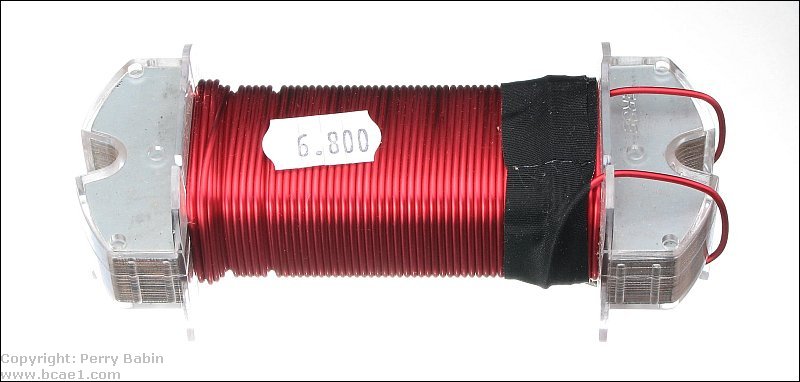
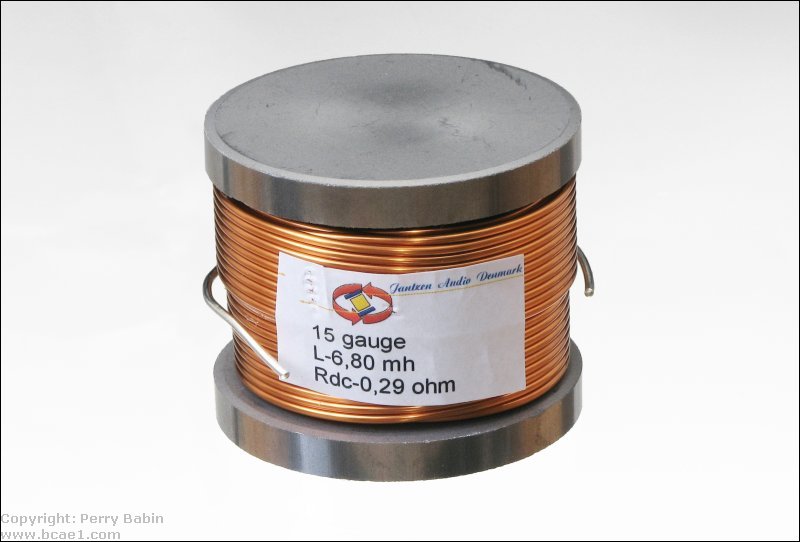
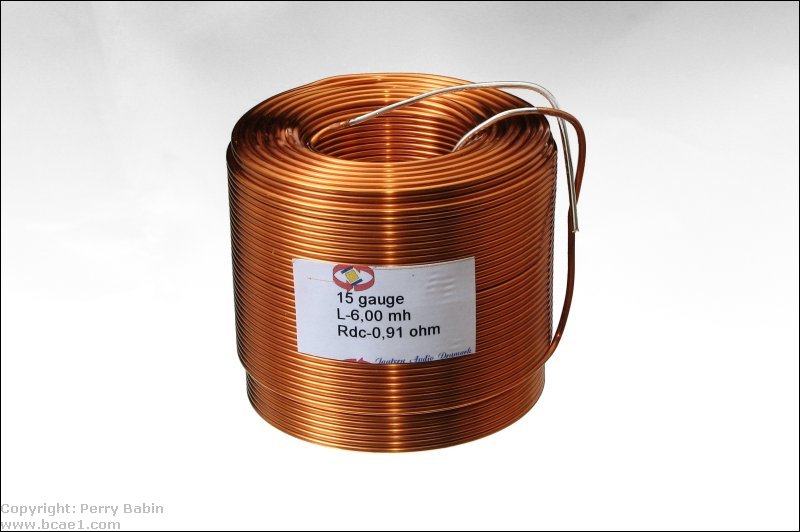
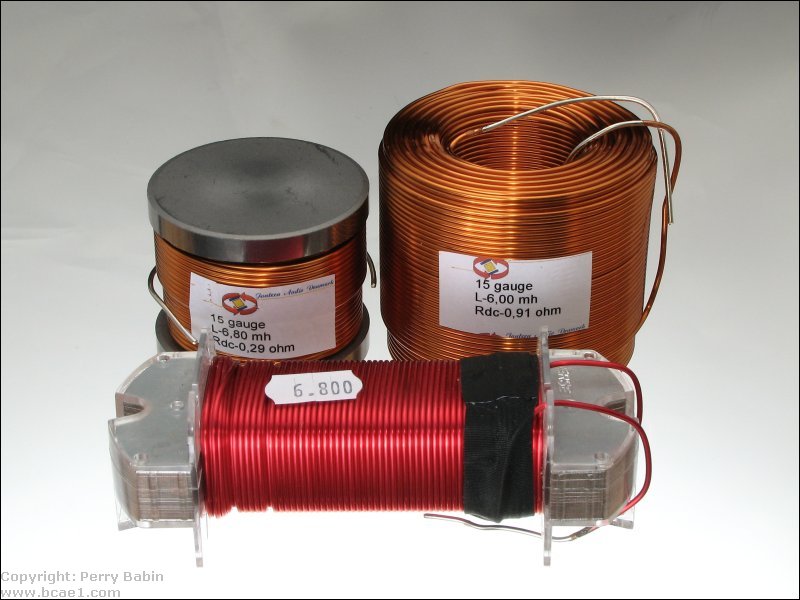
First-Order Low Pass Crossover:
For a simple 6dB/octave low pass filter, the inductor (coil) is simply connected in series with the speaker. It does not matter whether you insert it in the positive side or the negative side. If the coil you're using is relatively large, I'd recommend glueing the coil down to the enclosure (instead of letting it hang from the speaker terminal).
Low Pass Crossover Response:
In the following graph the violet line shows how the signal level drops off (rolls off) as the frequency is increased. You can see the violet line is virtually unaffected (virtually no decrease in the signal level) below ~400hz. At point A, you can see that the signal is down 3dB at 1khz. As I said on the previous page, the 3dB down point is the crossover frequency (for Butterworth alignments). It represents the point where the power reaching the speaker is 1/2 of what it would be without the crossover. If you were driving the speaker directly with a 1khz sine wave at 100 watts of power and then inserted the inductor, only 50 watts of power would get through to the speaker (if the drive level from the amp remained constant). At point B, the signal level is down by 6dB. This represents the 1/4 power point. If the frequency of the sine wave was increased to 1250hz and the level from the amplifier remained constant, the power at 1250hz would be only 25 watts. At point C (3750hz), the signal is down by 12dB. This means that the amount of power reaching the speaker at 3750hz is 1/16 as much as it would be without the inductor.
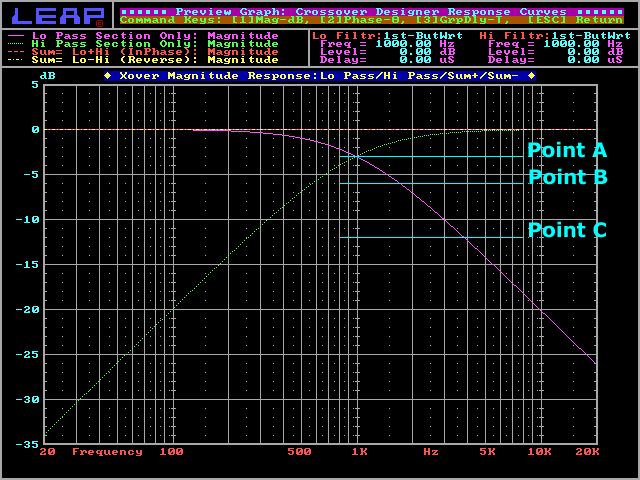
No comments:
Post a Comment